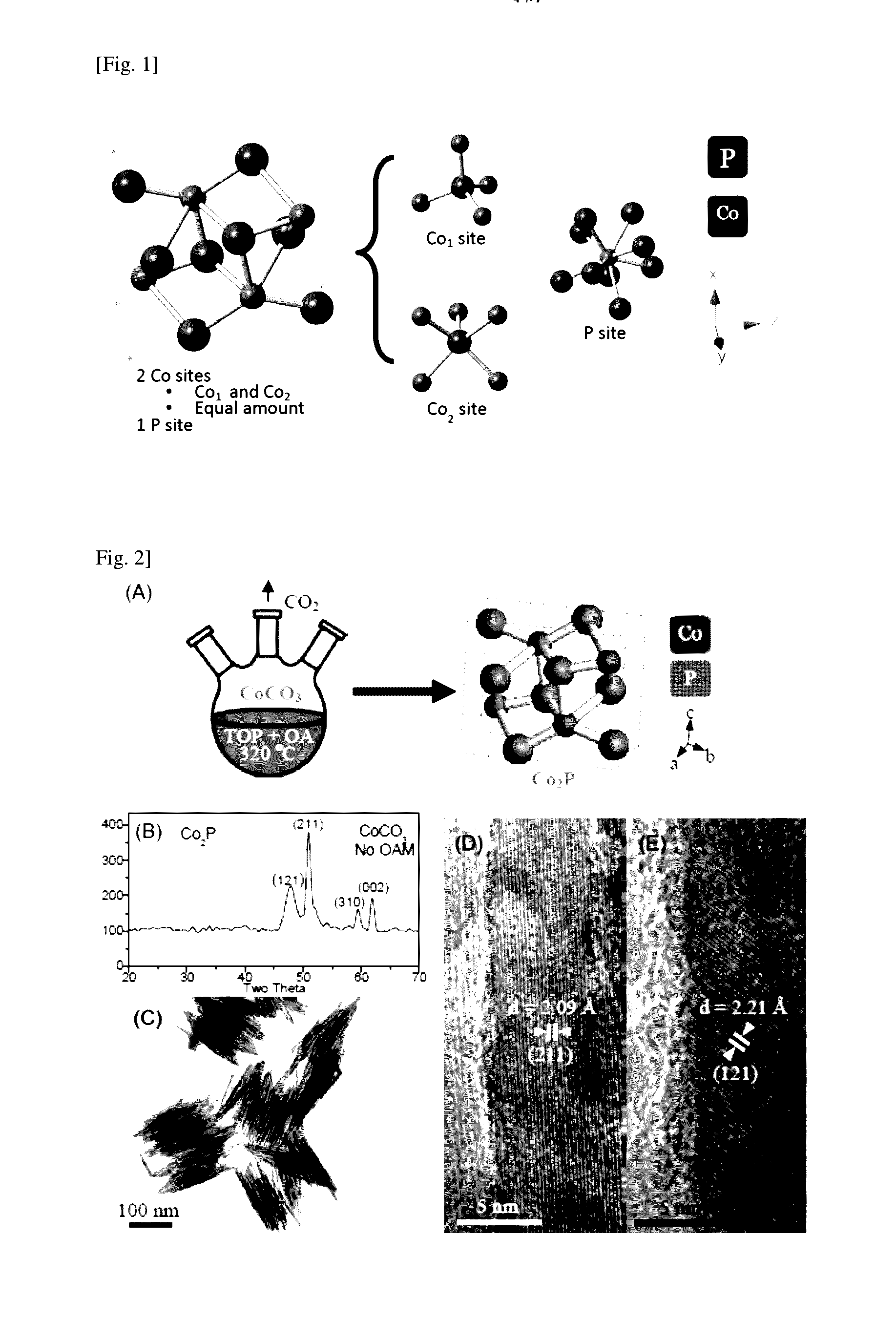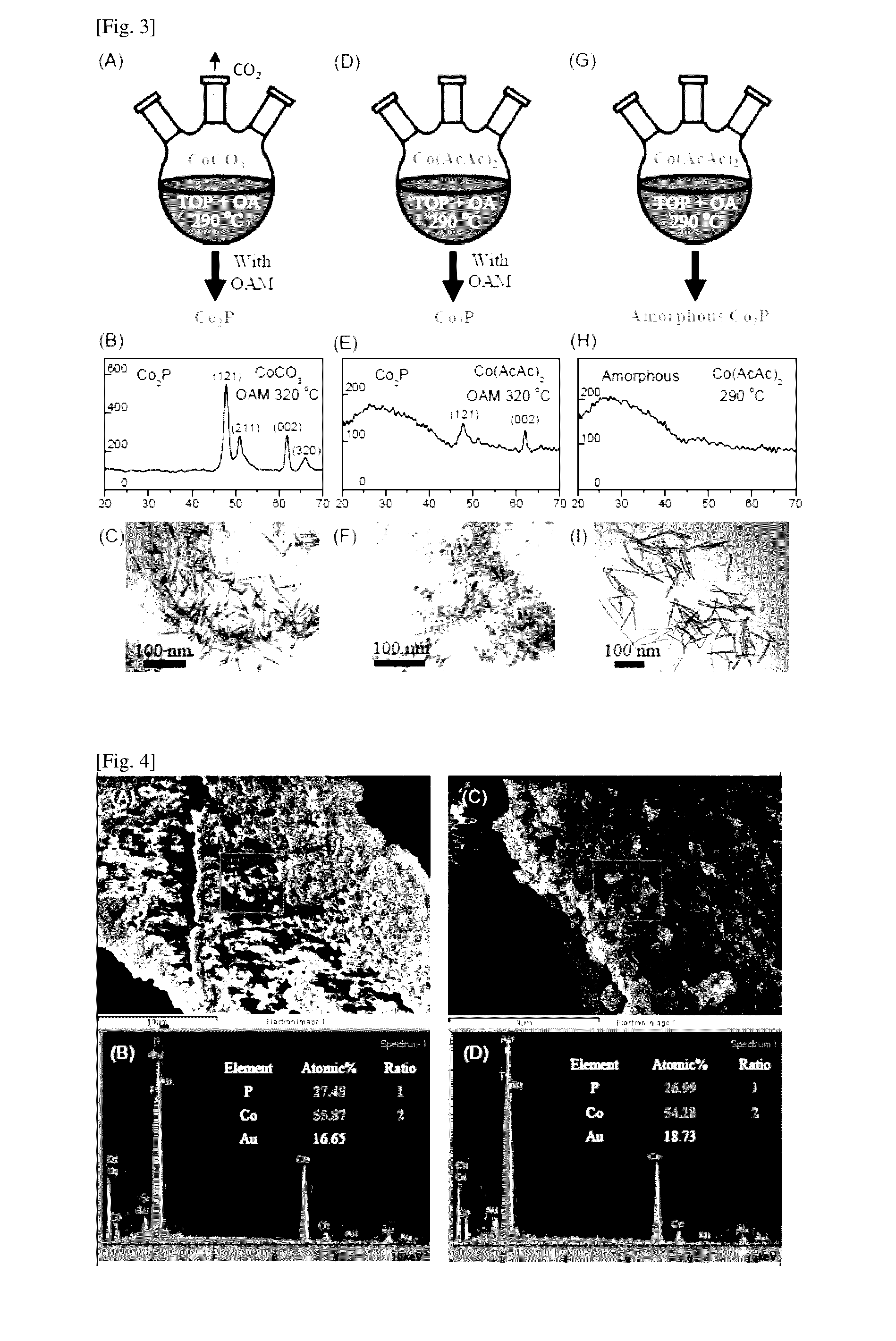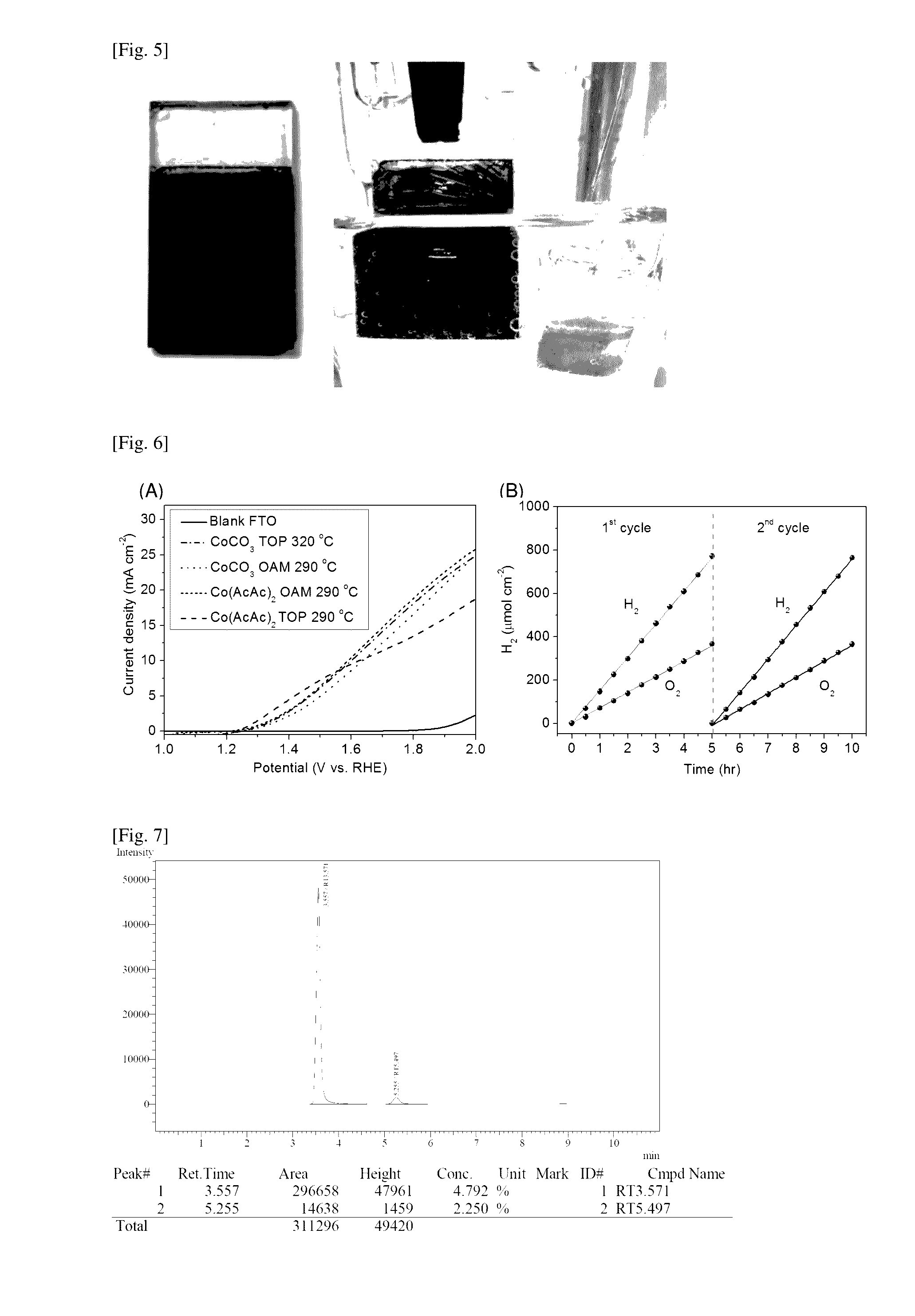Method for preparing transition metal phosphide
- Summary
- Abstract
- Description
- Claims
- Application Information
AI Technical Summary
Benefits of technology
Problems solved by technology
Method used
Image
Examples
example 1
Synthesis of Cobalt Phosphide A
[0083]Cobalt phosphide A was prepared by first dissolving 1.5 mmol of cobalt (II) carbonate (CoCO3, 99%, obtained from Sigma-Aldrich of Missouri of the United States of America) in 4.5 mmol of oleic acid (OA, CH3(CH2)7CH═CH(CH2)7COOH, cis 70%, obtained from Sigma-Aldrich of Missouri of the United States of America) and 5 ml of TOP ([CH3(CH2)7]3P, 90%, obtained from Sigma-Aldrich of Missouri of the United States of America) forming a mixture. The temperature of the mixture was then adjusted to 110° C. with vigorous magnetic stirring followed by degassing in vacuum for 15 minutes. At this temperature, cobalt (II) carbonate dissolved in TOP and blended with oleic acid to form cobalt oleate and by-product CO2. The degassing procedure is crucial to prevent oxygen to enter into the reaction chamber thereby inhibiting the reaction. The post-degassing mixture exhibited a homogeneous translucent violet color, indicating a complete dissolution of Co2+ and the fo...
example 2
Synthesis of Cobalt Phosphide B
[0085]To investigate the influence of temperature and different reagents on the chemical phase and the shape or size of the synthesized cobalt phosphide, cobalt phosphide B was prepared using the same method as described in Example 1 but with final temperature set to 290° C. instead of 320° C. and with adding 3 mmol of oleylamine (denoted as OAM thereafter, CH3(CH2)7CH═CH(CH2)7CH2NH2, cis 70%, obtained from Sigma-Aldrich of Missouri of the United States of America) to the reaction mixture (see FIG. 3(A)).
[0086]TEM and XRD studies were carried out to investigate the properties of the nanostructures obtained. As revealed in FIGS. 3(B) and 3(C), the XRD pattern of the nanostructures synthesized using cobalt (II) carbonate in 4.5 mmol of oleic acid, 5 ml of TOP with the addition of 3 mmol of oleylamine features dicobalt phosphide phase. It is surprisingly found that the crystallinity of nanostructures was reduced when the temperature is decreased to 290° C...
example 3
Synthesis of Cobalt Phosphide C
[0087]Here, cobalt phosphide C was synthesized using the method as described in Example 1. Cobalt (II) acetylacetate (Co(AcAc)2, 99%, obtained from Sigma-Aldrich of Missouri of the United States of America) was used as the cobalt (II) salt instead of cobalt (II) carbonate (see FIG. 3(G)). The final temperature of the reaction mixture was set to 290° C. XRD analysis depicted in FIG. 3(H) shows an amorphous pattern with no recognizable peaks. Further, inspection of SEM energy-dispersive X-ray spectroscopy (EDX) analysis depicted in FIG. 4(C) and FIG. 4(D) confirms that the chemical composition of cobalt phosphide C had the atomic ratio of cobalt to phosphorous about 2 to 1. This example demonstrates the synthesis of armorphous dicobalt phosphide nanostructures. The morphology of cobalt phosphide C was nanowire (FIG. 3(I)).
PUM
 Login to View More
Login to View More Abstract
Description
Claims
Application Information
 Login to View More
Login to View More - R&D
- Intellectual Property
- Life Sciences
- Materials
- Tech Scout
- Unparalleled Data Quality
- Higher Quality Content
- 60% Fewer Hallucinations
Browse by: Latest US Patents, China's latest patents, Technical Efficacy Thesaurus, Application Domain, Technology Topic, Popular Technical Reports.
© 2025 PatSnap. All rights reserved.Legal|Privacy policy|Modern Slavery Act Transparency Statement|Sitemap|About US| Contact US: help@patsnap.com



